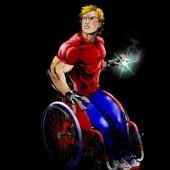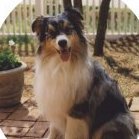-
Posts
1,887 -
Joined
Profile Information
-
Gender
Male
-
Location
"Michiana," USA
-
Interests
CG, obviously. Traditional visual 2d and 3d art. History. Music, piano emphasis. Nature conservancy, gardening, cooking.
Too old for martial arts or treking.
-
 Petr Bajer reacted to a post in a topic:
AD: Direction of stroke gradient
Petr Bajer reacted to a post in a topic:
AD: Direction of stroke gradient
-
 Josephmsc reacted to a post in a topic:
Best Image Vectorizer for Mac with Affinity Designer
Josephmsc reacted to a post in a topic:
Best Image Vectorizer for Mac with Affinity Designer
-
 Zodman reacted to a post in a topic:
Resize multiple objects at once
Zodman reacted to a post in a topic:
Resize multiple objects at once
-
 AncientWire reacted to a post in a topic:
How do I add an outline around the whole design?
AncientWire reacted to a post in a topic:
How do I add an outline around the whole design?
-
 WolgAbrupt0r reacted to a post in a topic:
[Designer] Rotate and Snap?
WolgAbrupt0r reacted to a post in a topic:
[Designer] Rotate and Snap?
-
 PaoloT reacted to a post in a topic:
NeoFinder DAM Tool with Affinity products?
PaoloT reacted to a post in a topic:
NeoFinder DAM Tool with Affinity products?
-
 Andreas Scherer reacted to a post in a topic:
Resize multiple objects at once
Andreas Scherer reacted to a post in a topic:
Resize multiple objects at once
-
 Megnusin reacted to a post in a topic:
Bake rotation into path
Megnusin reacted to a post in a topic:
Bake rotation into path
-
 soterios reacted to a post in a topic:
Affinity Designer vs. Inkscape
soterios reacted to a post in a topic:
Affinity Designer vs. Inkscape
-
 GregoryOR reacted to a post in a topic:
Chiseled Type Effect
GregoryOR reacted to a post in a topic:
Chiseled Type Effect
-
Hi, rodsal23, What's your market like? Where I live, it used to be pretty easy to get work designing T-shirts and vinyl signage w. base level skills. But professional work usually required having a portfolio showing about 4 years of work. And, often, at least 2 years of college level graphic design. I understand there was a market at least just a few years ago for CD covers. My elder daughter and her husband use CG all the time to develop tattoo designs for their clients. The clients often change their minds, so be quick to adapt is good. But most clients are like that. "Yes, yesterday I said that design was OK, but can you change it this way and be ready to go later in the day?" Maybe your question should be more like "Am I adept enough to change a polished design in 2 hours?"
-
Hey, Vec, More nice work from you. Face is great, tho' the lower portion of the dress is maybe a little to "lo-poly". And I do know the real title.
-
Hi, anotherhoward, I'm not using the 1.8 release yet, just 1.7.1, but I 'spose the brush works the same. I'm a little unclear about what you are asking. "In Designer, after making a vector brush stroke, how can I just widen the object without lengthening it? When I try to just increase the width it is also increasing the object's height" The stroke along the vector is controlled by the object stroke attribute. Changing the stroke size will expand/contract the spread of the bitmap. Also, the stroke pressure map will vary the spread along the vector. Designer does not have an auto trace feature. A vector brush is just a bitmap tiled on top of a vector. One might do a screen grab, and run the pixels thru a bitmap vectorizer.
-

bug
gdenby replied to Fzyn's topic in Pre-V2 Archive of Affinity on Desktop Questions (macOS and Windows)
Hi, Fzyn, From looking at your posts, I guess you are mistaking curve stroke attributes for shapes themselves. Change your View Mode from Vector to Outline. Any curve levels, when subjected to a boolean operation, will add, subtract etc the areas defined by the curve nodes, not the stroke attribute. Hope this helps some. -
Hi, devoured_elysium, My understanding is that the boolean operations work on areas. A straight line has no area, so there is no operation. If the line is curved, it implies an area between the nodes. Then the bollean works, but it automatically closes the previously implied area. The new perimeter needs to be cut apart using the node tool.
-

lined figure
gdenby replied to Rolandas's topic in Pre-V2 Archive of Affinity on Desktop Questions (macOS and Windows)
Hello, again, Rolandas, The "boolean" operation, such as add or subtract, can only work when a curve can enclose an area. My example is made from many thin rectangles. Expanding a stroke will make something similar, but often adds many un-needed nodes. The boolean operations will work on those thin rectangle groups. BTW, they were made by "power duplication," so after making the first line-like thin rectangle allows many repetions in just moments. -

lined figure
gdenby replied to Rolandas's topic in Pre-V2 Archive of Affinity on Desktop Questions (macOS and Windows)
-

RGB VS CMYK
gdenby replied to AndyMane's topic in Pre-V2 Archive of Affinity on Desktop Questions (macOS and Windows)
Hi, AndyMane, RGB to CMYK conversions rarely reproduce in print what one sees on screen. In general, computer displays show a wider gamut of color than what printers can reproduce with inks. See, for instance, https://www.color-management-guide.com/relative-colorimetric-and-perceptual-rendering-intent.html. Essentially, one tries to squeeze or stretch and RGB image into a CMYK space. Typically, the CMYK image is rather dull and/or distorted. The only reliable solution I've had is to print trials, and tweak the original file till I get something that corresponds to what I want to see. -
 gdenby reacted to a post in a topic:
How to choose standard colours
gdenby reacted to a post in a topic:
How to choose standard colours
-
Hi, Gargamel, Please clarify. When you say "border width of 4 pixels", do you mean the shape has a stroke width of 4? You may be getting confused by the apeearce of the stroke, which can be set to the outaside or inside of the shape, or centered on the shape boundary. The snapping is based on the shape, not the stroke. Try switch to outline view to see the base shape geometry.





